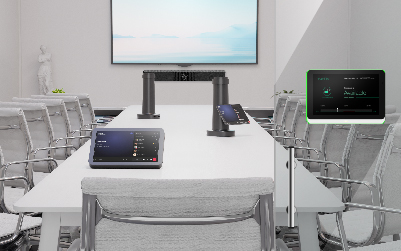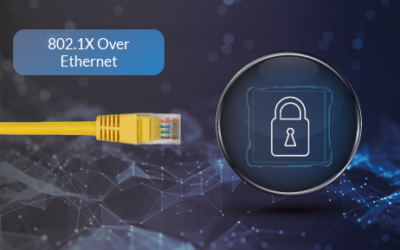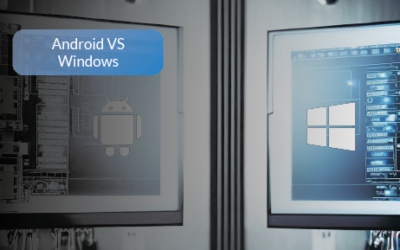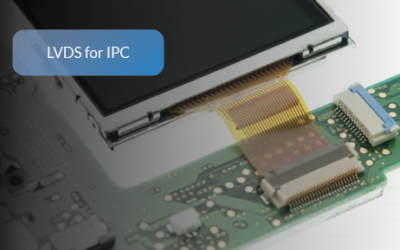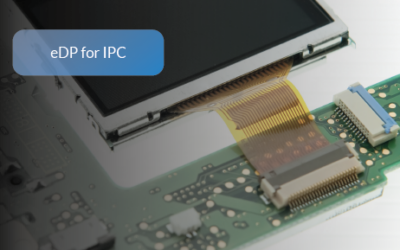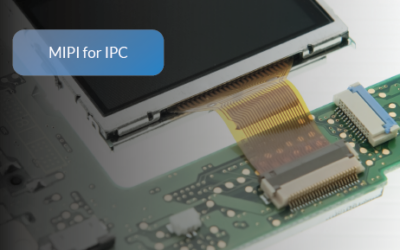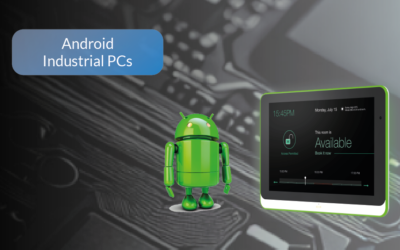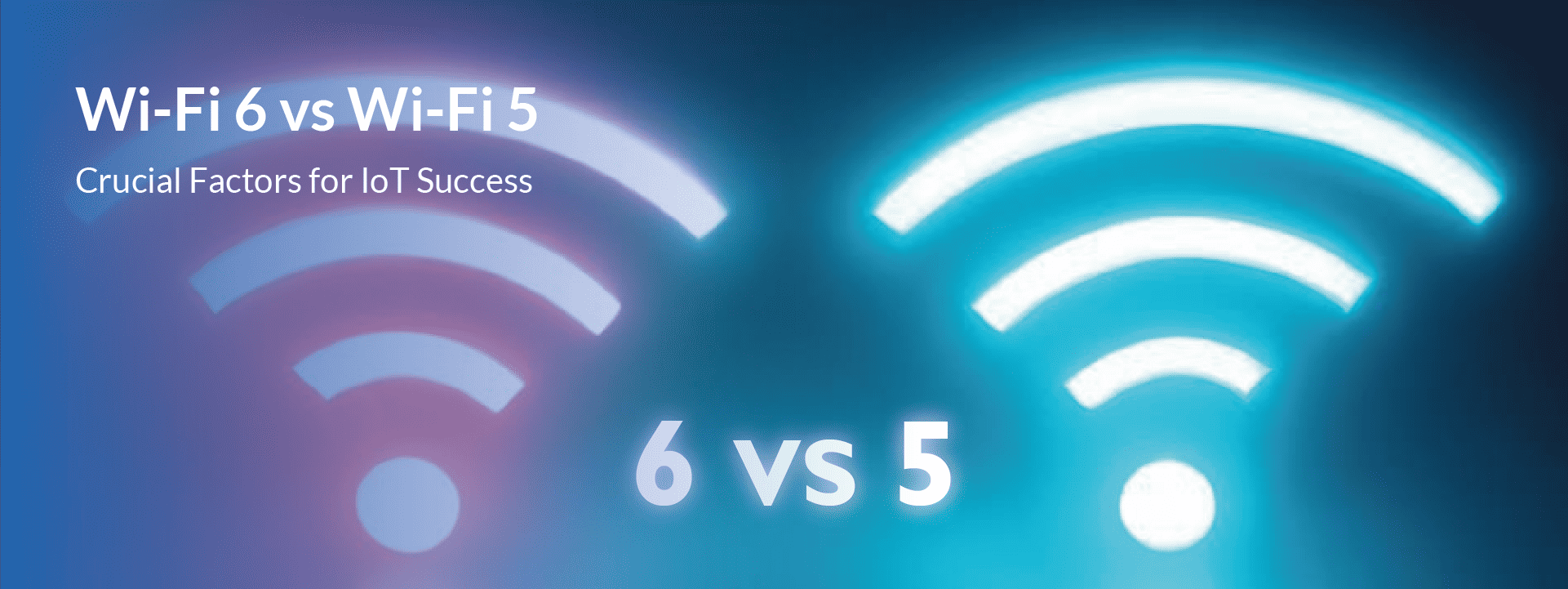
Wi-Fi 6 vs Wi-Fi 5: In-Depth Analysis for Industrial PC Applications
With increasing demands for IoT (Internet of Things) devices and industrial PCs, selecting an ideal wireless standard for connectivity becomes more of a critical decision than ever. Here, we present an in-depth comparison between Wi-Fi 6 and 5 in terms of IoT/PC applications highlighting their key differences and implications, so you can make an informed choice as to which Wi-Fi standard best meets your individual requirements.
Understanding Wi-Fi 6 vs Wi-Fi 5: Key Distinctions
| Feature | Wi-Fi 6 | Wi-Fi 5 |
|---|---|---|
| Speed | Up to 9.6 Gbps | Up to 3.5 Gbps |
| Capacity | Higher capacity (OFDMA, MU-MIMO) | Lower capacity |
| Power Efficiency | Better (Target Wake Time) | Less efficient |
| Data Management | Enhanced (OFDMA, MU-MIMO) | Basic |
| Security | Stronger (WPA3) | Weaker (WPA2) |
| Interference Management | Better (2.4 GHz and 5 GHz frequency bands) | Less efficient |
| IoT Device Support | More optimized for IoT devices | Less optimized for IoT devices |
| Cost | Higher upfront costs for routers and devices | Lower initial investment for routers and devices |
| Compatibility | Backward compatible, may require new devices | Greater compatibility with existing devices |
| Future-Proof | Better prepared for upcoming IoT advancements | Less prepared for future IoT advancements |
Keep in mind that this table is a general comparison and individual performance may vary depending on the specific devices, environments, and use cases.
1. Speed and Performance: WiFi 6 vs WiFi 5
Wi-Fi 6 stands out from Wi-Fi 5 by its enhanced speeds, boasting theoretical maximum speeds of 9.6 Gbps while Wi-Fi 5 maxes out at 3.5 Gbps. This greater data transfer speed can prove especially advantageous when connected to IoT devices or industrial PCs; faster data transfer reduces latency while improving network performance overall.
2. Capacity: Comparing WiFi 5 and WiFi 6 and Their Impact on IoT Devices and Industrial PCs
Wi-Fi 6 was specifically created with IoT in mind, providing significant capacity increases compared to Wi-Fi 5. Specifically, OFDMA (Orthogonal Frequency Division Multiple Access) and MU-MIMO (Multi-User Multiple Input Multiple Output) technologies are employed in order to support more devices simultaneously – essential capabilities when working with IoT applications or industrial PCs that must manage numerous sensors simultaneously.
3. Power Efficiency in IoT Environments: Comparing WiFi 6 and WiFi 5
Wi-Fi 6 introduces Target Wake Time (TWT), allowing devices to set a schedule for when they will become active, thus reducing power consumption. This feature is especially beneficial in IoT devices and industrial PCs to extend battery life while decreasing energy use.
4. Data Management: How WiFi 6 Excels at Industrial PC Settings
Wi-Fi 6’s enhanced data management capabilities can bring tremendous advantages to industrial PC environments. Utilizing OFDMA and MU-MIMO, Wi-Fi 6 can allocate bandwidth more efficiently between multiple devices while also reducing network congestion for smoother data transfers resulting in more efficient networks that ensure reliable operations of IoT devices and industrial PCs.
5. Security Enhancements in WiFi 6 over WiFi 5 for securing IoT and Industrial Networks
Wi-Fi 6 includes WPA3, the latest security protocol that offers stronger encryption and more effective defense against potential cyberattacks. This feature is especially beneficial in IoT and industrial PC networks where breaches in security could cause significant disruptions or data loss.
6. Interference and Availability: WiFi 6 Vs 5 and Its Importance for IoT Applications
Wi-Fi 6 was specifically created to operate in the increasingly congested 2.4 GHz and 5 GHz frequency bands, thus minimizing interference from other wireless devices. This is especially beneficial when used with IoT applications or industrial PCs as a stable connection is critical to reliable data transfer and device operation.
Pros and Cons of Wi-Fi 6 for IoT Projects and Industrial PC Environments
1. Advantages of Wi-Fi 6 in IoT Projects and Industrial PC Environments
- Enhanced speed and performance
- Greater capacity for multiple devices
- Improved power efficiency
- Better data management
- Stronger security with WPA3
2. Wi-Fi 6’s Drawbacks for IoT and Industrial PCs
- Greater upfront costs associated with Wi-Fi 6 routers and devices
- Limited availability of devices enabled with this standard
- Potential slower performance among older devices
While Wi-Fi 6 is backward compatible, older devices may not fully benefit from its increased performance and capacity. Sometimes upgrading may necessitate making additional purchases to achieve optimal performance.
Advantages and Disadvantages of Wi-Fi 5 in IoT Projects and Industrial PC Environments
1. Advantages of Wi-Fi 5 in IoT Projects and Industrial PC Environments
- Lower initial investment for Wi-Fi 5 routers and devices
- Greater compatibility with existing devices/components
2. Disadvantages of Wi-Fi 5 for IoT and Industrial PC Applications
- Lower speed and performance when compared with Wi-Fi 6
- Limited capacity for managing multiple devices
- Less efficient power consumption for IoT devices
- Inferior security features compared to WPA3 standard
When it comes to selecting an appropriate Wi-Fi standard for an IoT project and industrial PC use case, the speed and capabilities comparison between Wi-Fi 6 and 5 should be evaluated carefully in terms of IoT use cases and industrial PC environments.
When choosing between Wi-Fi 6 and 5, it’s essential to take the specific needs of your IoT project or industrial PC environment into consideration. If high-speed data transfer, increased capacity, and enhanced power efficiency are of importance for your applications, Wi-Fi 6 may be the better option.
Compatibility and Interoperability for IoT Devices and Industrial PCs: Wi-Fi 5 Vs Wi-Fi 6
Make sure the Wi-Fi standard you select is compatible with your existing devices and infrastructure, particularly Wi-Fi 6. While Wi-Fi 6 is backward compatible, upgrading may require purchasing new devices in order to take full advantage of its improvements. If your current setup works well with Wi-Fi 5, consider deferring upgrading until costs and availability of Wi-Fi 6 devices become more attractive.
Wi-Fi’s Future in IoT and Industrial PC Applications: Preparing for Wi-Fi 7
As wireless technology evolves, it’s vital that we remain abreast of future advancements, such as Wi-Fi 7 and other emerging standards. While Wi-Fi 6 brings major upgrades over Wi-Fi 5, its technology landscape will continue to shift – planning upgrades and staying informed of new advancements can ensure your IoT and industrial PC networks stay at the cutting-edge and meet evolving requirements.
Conclusion: Selecting an Appropriate Wireless Solution for IoT and Industrial PC Applications
Wi-Fi 6 stands out as an appealing choice for IoT projects and industrial PC environments, boasting faster speed, increased capacity, better power efficiency, enhanced data management capabilities, and stronger security features that meet modern IoT and industrial applications’ demands.
As with any decision, when selecting Wi-Fi 6 over Wi-Fi 5, it’s crucial to assess your needs, budget constraints, and compatibility before making your choice. While Wi-Fi 6 may be considered the future of wireless connectivity, Wi-Fi 5 still delivers sufficient performance in many situations. By considering all the factors discussed herein, an informed choice can be made that meets both IoT and industrial PC wireless needs effectively.
IoT technologies come with a unique set of challenges that require a high level of expertise and knowledge to navigate. From choosing the right hardware and software to ensuring security, scalability, and easy maintenance, the success of an IoT project depends on a thorough understanding of these challenges. As an ODM service provider with 20+ years of experience in the industry, LV-Tron is well-equipped to define IoT applications and deliver optimized solutions that address these challenges. By partnering with LV-Tron, companies in IoT can rest assured that their IoT solution will be executed successfully and efficiently.
Primax and LV-Tron Announce Strategic Partnership to Revolutionize Smart Meeting Solutions
Primax Electronics and LV-Tron (a division of IAdea) have officially announced their strategic partnership to invest in and develop cutting-edge smart meeting solutions. This collaboration aims to position both companies as leaders in the smart meeting industry, with...
Understanding SCEP: Its Role in Android Security
Understanding SCEP: Its Role in Android Security Simple Certificate Enrollment Protocol (SCEP) plays a vital role in digital security. Within Android, SCEP has become an essential tool, simplifying the once complex process of certificate enrollment. This article...
802.1X over Ethernet: A Key Solution for a More Secure Network
802.1X over Ethernet: A Key Solution for a More Secure Network Introduction to 802.1X over Ethernet In an era where network security is paramount across various industries, understanding and implementing robust security measures is essential. Last time, we delved into...
IEEE 802.1X Explained: A Plainspeak Guide to Securing Your Network
IEEE 802.1X Explained: A Plainspeak Guide to Securing Your Network Introduction to 802.1X 802.1X (The "X" is typically capitalized) is a cornerstone of modern network security and one of the most widely adopted security measures today. Here's why: Popularity: 802.1X...
A Step-by-Step Guide to Understanding Hardened Android
A Step-by-Step Guide to Understanding Hardened Android Introduction to Hardened Android In the world of mobile operating systems, Android stands out for its open-source nature, which allows for extensive customization. However, this flexibility can sometimes lead to...
Revolutionizing Business Collaboration with LV-Tron’s Immersive Smart Conference Rooms
rRevolutionizing Business Collaboration with LV-Tron's Immersive Smart Conference Rooms Introduction: Unveiling the Power of Smart Conference Rooms In the dynamic landscape of the digital age, the traditional conference room has been transformed into a "smart...
Android vs Windows: A User’s Guide to Choosing the Right OS
Android vs Windows: A User's Guide to Choosing the Right OS Choosing the right operating system for industrial PCs is crucial. This article provides a comprehensive comparison between Android and Windows, focusing on CPU choices, memory usage, and storage usage....
Joint Development Manufacturing (JDM): The LV-Tron Advantage
Joint Development Manufacturing: The LV-Tron Advantage In the tech industry, Joint Development Manufacturing (JDM) is a game-changer. It offers numerous benefits such as cost savings, faster time to market, and access to specialized expertise. But at LV-Tron, we don't...
LVDS Made Simple: Quick Start Guide with Expert’s Tips
LVDS Made Simple: Quick Start Guide with Expert’s Tips Introduction to LVDS Welcome back to our Quick Start Guide series! We've previously explored the high-speed interfaces of MIPI and eDP, crucial in mobile devices and embedded systems respectively. Today, we’re...
eDP Made Simple: Quick Start Guide with Expert’s Tips
eDP Made Simple: Quick Start Guide with Expert’s Tips Introduction to eDP Welcome back to our Quick Start Guide series! In our previous installments, we delved into the world of MIPI, a high-speed interface crucial in mobile devices and small devices, and LVDS, ideal...
MIPI Made Simple: Quick Start Guide with Expert’s Tips
MIPI Made Simple: Quick Start Guide with Expert's Tips Introduction to MIPI Welcome to our Quick Start Guide series! In this first installment, we’re diving into the world of MIPI, or Mobile Industry Processor Interface. This high-speed interface is a key player in...
Conference Room Technology 2023: The Innovations You Can’t Ignore
Conference Room Technology 2023: The Innovations You Can't Ignore As we navigate the digital era, the landscape of conference room technology is evolving at an unprecedented pace. This rapid progression has ushered in a host of new software, integrations, and...
Overcoming Challenges in Shifting from Traditional to Hybrid Meetings
Overcoming Challenges in Shifting from Traditional to Hybrid Meetings The digital era has ushered in a new trend of hybrid meetings, which involve both internal employees and external teams from other companies. These meetings offer significant benefits, including...
Smart Meeting Room
The Essential Hardware for a Smart Meeting Room The Rising Trend of Smart Meetings: Embracing the Digital Era According to the 63rd International Meetings Statistics Report released by the Union of International Organizations (UIA) in 2022, the number of meetings is...
Understanding Android Industrial PCs: A Detailed Overview
Understanding Android Industrial Panel PCs: A Detailed Overview In the rapidly evolving world of industrial automation, Android Panel PCs have emerged as a game-changer. These powerful devices are transforming the way industries operate, offering unparalleled...

